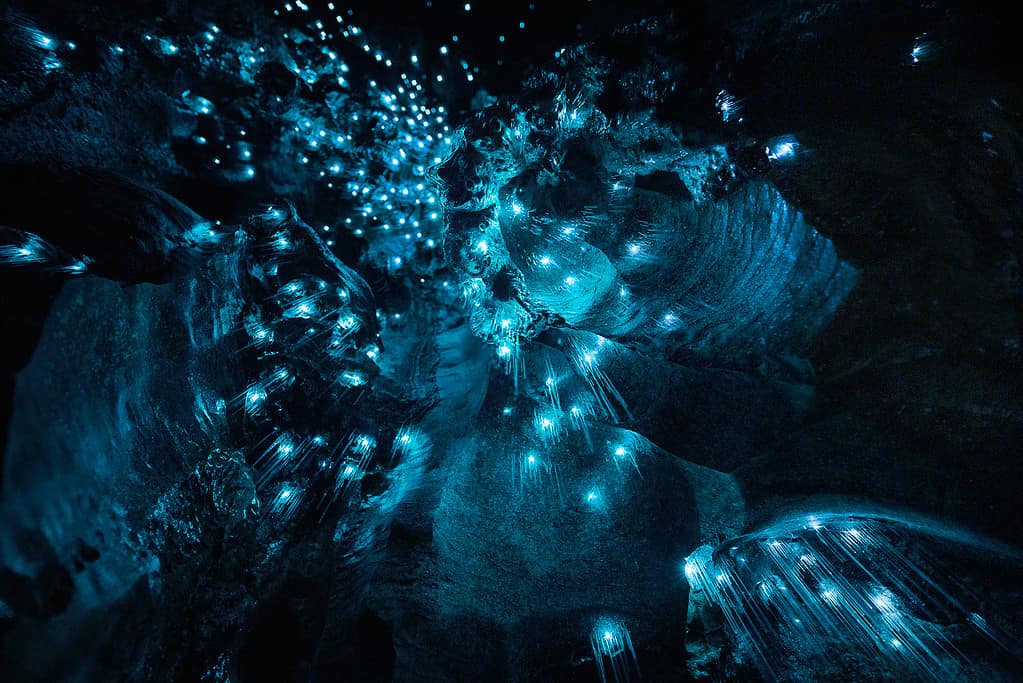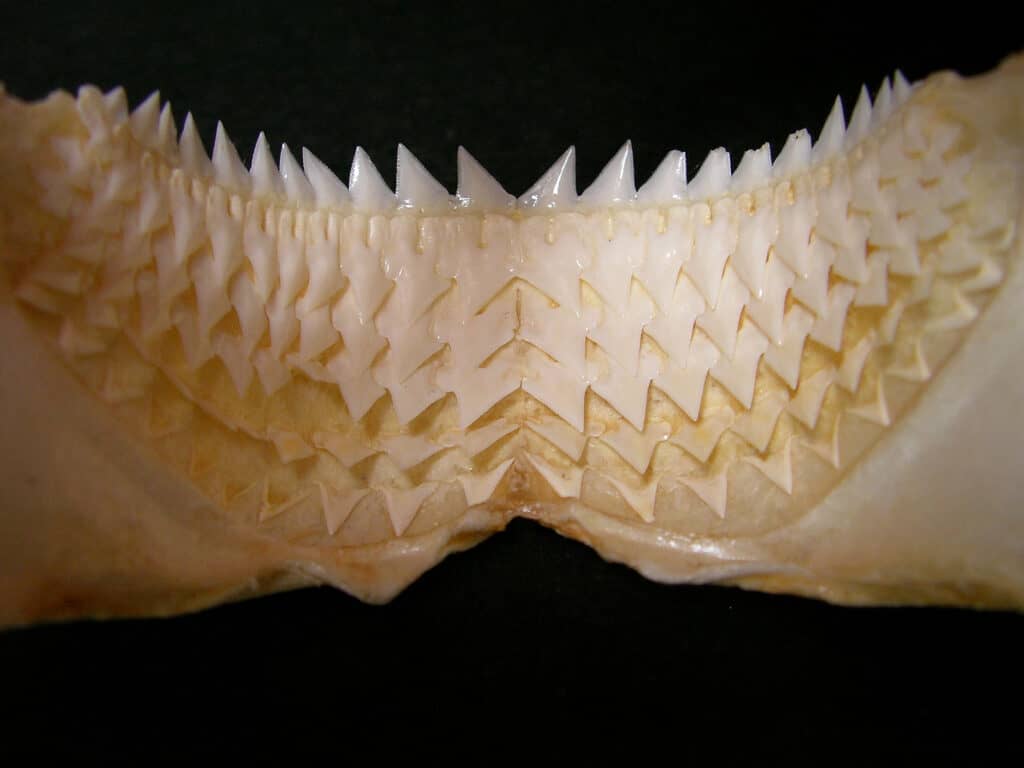Bioluminescence, or the ability to glow and produce light, is a unique ability that is observed in the animal kingdom. Many species of sharks have been observed to have this ability, with the largest being the kite shark, which was discovered only recently. Other animals and insects that also have this ability include certain snails, squids, fireflies, and worms.
Bioluminescence refers to the ability to create light organically. This is commonly seen in ocean animals, as 76% of species living there have bioluminescent abilities to some degree. In land-living species, bioluminescence is most commonly seen in insects that live in the dark or underground. In either case, ocean or land species, this unique ability is seen in organisms that don’t often live in the sunlight.
Species of fungi also have bioluminescent abilities, but there are no plants that produce light in this way. This is likely due to the fact that most plants need at least some sun to survive and undergo photosynthesis.
Bioluminescence: How Does It Work?

©iStock.com/MarcelStrelow
Creating light from their bodies is a unique talent, but how exactly do animals with this ability make it work? Chemical reactions are typically the cause of the glowing. The animal that is bioluminescent must have a certain chemical in their bodies called ‘luciferin’. When this chemical interacts with oxygen, energy is released in the form of light.
With so many bioluminescent animals living underwater, you may be wondering how oxygen has the chance to cause a reaction. While oxygen is typically talked about as the gas that we breathe to survive, it is also a molecule that exists underwater. All living organisms need oxygen to survive, and it exists underwater in lesser quantities than it exists in the air.
If an animal does not have the luciferin chemical, but is bioluminescent, it is likely the host to a bacteria which does have bioluminescence.
Why Glow?
For many bioluminescent animals, glowing is a way of protecting themselves. The strange ability to put off light can scare away their predators. Conversely, the glowing can attract other species to the animal, including those that they prey upon. Bioluminescence is also seen as a way of attracting mates or communicating with fellow members of their species.
Giant Glowing Squid
The largest animal with bioluminescent abilities is the Dana octopus squid, also known as the giant glowing squid, or by its scientific name Taningia danae. These giant creatures have been known to grow to seven and a half feet long and up to 135 pounds. Many other creatures of the squid family, called Octopoteuthidae, also share the ability to glow.
Something that sets Dana octopus squids apart from their relatives is their extremely large photophores. Photophores are a type of organ that exists in marine animals which gives them the ability to harness bioluminescence. The photophores of the Dana octopus squid are similar in thickness to lemons, making them the largest of any other species.
Photophores are a very unique organ that is commonly compared to eyes. This is because there is a thin membrane that exists over the photophore which the squid can open and close. Rather than letting in light, this membrane does the exact opposite. When it’s closed, the squid can keep any light from being emitted, and when it’s open, the squid can cast light out from its body. This gives the octopus squid the unique ability to ‘blink’ its lights. This is an excellent ability to have while hunting prey, as the squid uses the blinking light to stun the organisms that it hunts.
Dana octopus squids are predators that exist toward the top of their food chain. They only have one major predator: the sperm whale.
Kitefin Shark

©Alessandro De Maddalena/Shutterstock.com
The largest known bioluminescent vertebrate is the kite shark, a species that was discovered in 2020. Before this discovery, bioluminescence had only been documented in a few species of sharks. At the time of the kitefin shark discovery, two other smaller species were found and documented as well.
Kitefin sharks usually grow to a length of four feet long and with some surpassing the five or six-foot mark. They are fairly light, with an average kitefin shark weighing just 18 pounds. Kitefin sharks are a uniform color of dark brown or gray, with large, gaping eyes. However, when they choose to show it off, bioluminescence allows the species to glow a blue color.
They are deepwater predators, with large, knife-shaped teeth that have serrated edges. Their strong teeth and short jaws allow them to bite into much larger animals than themselves. They mainly feed on bony fishes, squid, octopus, and crustaceans. However, they are also thought to be scavengers who feed off of dead fish organism carcasses as well.
Kitefin sharks live in extremely deep water close to the ocean bottom. They’re typically found in water from 700 to 2,000 feet deep. This keeps them from being much of a threat to humans and is also likely why they were only recently discovered.
How Do Kitefin Sharks Glow?
Kitefin sharks are a unique bioluminescent species because scientists have not discovered the luciferin chemical in their skin samples. They also do not play host to glowing bacteria. It is still a mystery as to how the kitefin shark is able to emit light. Scientists believe that it has to do with their hormones, including the melatonin hormone which they believe somehow creates the glowing effect.
Protecting Kitefin Sharks
Kitefin sharks are considered to be of vulnerable conservation status. Due to overfishing, these sharks have seen a significant decline in population. The species is hunted for its meat, skin, and oil by fishermen from mainly Portugal and Japan. It has been hunted for many years but was only recently discovered to be bioluminescent, likely because of how quickly it is usually killed. The skin of kitefin sharks is prized because of its similarity to leather and is used for making jewelry and furniture.
Blackbelly Lanternshark

©I, Tambja, CC BY-SA 3.0, via Wikimedia Commons – License
The blackbelly lanternshark, also known as Etmopterus lucifer, was discovered to be bioluminescent at the same time as the kitefin shark. Blackbelly lanternsharks are much smaller than kitefin sharks, with the average size being a foot and a half long.
They live in deep waters like kitefin sharks, and are similar in color, ranging from brown to dark gray. They feed on bony fishes, squid, and crustaceans, and are not currently hunted by humans for any reason. Due to this, their conservation status is of the Least Concern.
Southern Lanternshark

©I, Tambja, CC BY-SA 3.0 – License
The third species of shark found to be bioluminescent during the 2020 expedition is the southern lanternshark. This species grows up to two feet long and are also found primarily in deep waters. It has a heavy body and a large head.
The lanternshark, like the two other bioluminescent sharks discovered, likely uses its glowing ability to hide from predators. By producing enough light to blend in with its surroundings, the shark is almost unnoticeable by hungry predators. Since the sharks had bioluminescent photocytes on their entire bodies, experts believe that the glowing ability is used for much more than just hiding. It is also likely used to stun and capture prey.
This species is much darker than the other two glowing sharks, often showing up as a dark brown or black color. It has been noted that the further these sharks live underwater, the darker they will become. Like the blackbelly lanternshark, southern lanternsharks are not hunted for any reason and are therefore a relatively stable species. They are listed as being of the Least Concern in terms of conservation status by the International Union for Conservation of Nature.
Bioluminescence All Around Us
Because of these recent discoveries, scientists estimate that at least ten percent of shark species have some level of bioluminescence. As research progresses, be sure that you will soon see many more sharks with the ability to glow.
Many other animals have bioluminescent capabilities, but these are the four largest species that exist with the ability. Sea snails, jellyfish, beetles, and fireflies all have the ability to produce light organically.
The post The 4 Largest Glowing Animals in the World appeared first on AZ Animals.
from Animal News, Facts, Rankings, and More! - AZ Animals https://ift.tt/hyAeJ1j